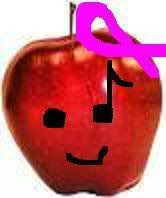 |
Welcome to the Piano World Piano Forums
Over 3 million posts about pianos, digital pianos, and all types of keyboard instruments.
Over 100,000 members from around the world.
Join the World's Largest Community of Piano Lovers
(it's free)
It's Fun to Play the Piano ... Please Pass It On!
|
|
|
|
71 members (AlkansBookcase, bcalvanese, 36251, brdwyguy, amc252, akse0435, 20/20 Vision, Burkhard, 14 invisible),
2,128
guests, and
306
robots. |
|
Key:
Admin,
Global Mod,
Mod
|
|
|
|
Joined: Jan 2003
Posts: 19,862
Yikes! 10000 Post Club Member
|
OP

Yikes! 10000 Post Club Member
Joined: Jan 2003
Posts: 19,862 |
I have several Scarlatti Sonata books (thank you my friends) and there is a Sonate in h, a Sonate in H, a Sonata in g, a Sonata in G, a Sonata in Es, Sonata in Fis....
Why all the different letters, capitalized and non capitalized?
They seem to play 'normally'.
accompanist/organist.. a non-MTNA teacher to a few
love and peace, Õun (apple in Estonian)
|
|
|
|
|
Joined: Nov 2009
Posts: 24,600
Yikes! 10000 Post Club Member
|

Yikes! 10000 Post Club Member
Joined: Nov 2009
Posts: 24,600 |
I have several Scarlatti Sonata books (thank you my friends) and there is a Sonate in h, a Sonate in H, a Sonata in g, a Sonata in G, a Sonata in Es, Sonata in Fis....
Why all the different letters, capitalized and non capitalized?.... H = B; upper case is major, lower case is minor (H meaning B is a German thing. Don't ask me why. I was born in Germany and I have no idea.)  Lower case in general means minor; g = G minor "Es" is E-flat. "Fis" is F-sharp. (BTW I had to look those up to be sure!) All of that is the German naming. There's also French, and I'm never completely sure I'm right about what they mean when I see "bemol" and "diese." (They're "minor" and "major.") And.....when I looked up Es and Fis, I saw that there's also an Italian system for the naming. Fortunately I've never come across that. 
|
|
|
|
|
Joined: Aug 2004
Posts: 1,173
1000 Post Club Member
|

1000 Post Club Member
Joined: Aug 2004
Posts: 1,173 |
The "H" and "h" for B is because in early notation "B" was alway B flat. Perhaps the "h" connects somehow with the word for "high" in German ("hoch"), but also has to do with the shape of the note (rounded "b" vs. square "h"). (All dimly remembered from music history classes while drinking a.m. coffee.)
Recovering cellist, amateur pianist. ![[Linked Image]](http://t1.gstatic.com/images?q=tbn:m8hBGJHyDFlGeM:http://www.asinari.it/cello.jpg) Check out my blog ! ![[Linked Image]](https://www.pianoworld.com/ABF_Medals/5medals.jpg)
|
|
|
|
|
Joined: Feb 2007
Posts: 1,905
1000 Post Club Member
|

1000 Post Club Member
Joined: Feb 2007
Posts: 1,905 |
I have several Scarlatti Sonata books (thank you my friends) and there is a Sonate in h, a Sonate in H, a Sonata in g, a Sonata in G, a Sonata in Es, Sonata in Fis....
Why all the different letters, capitalized and non capitalized?
They seem to play 'normally'.
The Notes B & H and Solfeggio solfa, solfeggio (Italian m.), Solfeggio (German n.), solfège (French m.), solfeo (Spanish m.) In almost all European countries, except those whose main language is English or a Romance language, the 'German' system is used. This also uses the letters A to G of the Roman alphabet, but reserves B for the note called B flat in the 'English' system, and uses H for the note that is B natural (or just B) in the 'English' system. An exception is found in The Netherlands, and more recently in Sweden, where note names usually follow the 'English' system, using B, rather than H, for B natural. In the 'German' system, the names of notes that are a semitone (or half note) higher or lower, receive the suffixes -is (in Swedish, -iss) and, unless the note name is a vowel, -es (in Swedish, -ess) respectively. When the note name is a vowel (i.e. A or E) the suffix -es (in Sweden, -ess) is reduced to -s (in Sweden, -ss). http://www.dolmetsch.com/musictheory9.htm#notesandkeys
Amateur Pianist and raconteur.
|
|
|
|
|
Joined: Mar 2010
Posts: 3,340
3000 Post Club Member
|

3000 Post Club Member
Joined: Mar 2010
Posts: 3,340 |
in French bémol and dièze mean: flat and sharp, minor and major would be: mineur et majeur, so b-flat minor and c-sharp major in French: si-bémol mineur et do-dièze majeur.
Longtemps, je me suis couché de bonne heure, but not anymore!
|
|
|
|
|
Joined: Aug 2008
Posts: 3,886
3000 Post Club Member
|

3000 Post Club Member
Joined: Aug 2008
Posts: 3,886 |
|
|
|
|
|
Joined: Jan 2003
Posts: 19,862
Yikes! 10000 Post Club Member
|
OP

Yikes! 10000 Post Club Member
Joined: Jan 2003
Posts: 19,862 |
sounds like you are supposed to step on the gas
accompanist/organist.. a non-MTNA teacher to a few
love and peace, Õun (apple in Estonian)
|
|
|
|
Forums43
Topics223,391
Posts3,349,282
Members111,634
| |
Most Online15,252
Mar 21st, 2010
|
|
|
|
|
|
|



![[Linked Image]](http://t1.gstatic.com/images?q=tbn:m8hBGJHyDFlGeM:http://www.asinari.it/cello.jpg)
![[Linked Image]](https://www.pianoworld.com/ABF_Medals/5medals.jpg)
